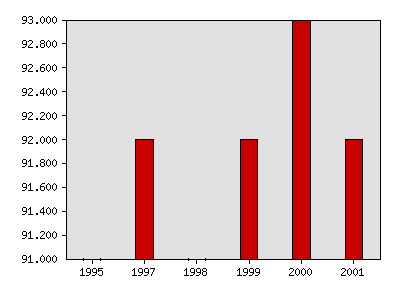What were things like in 2002?
The following idicator summary is from the 2002 Minnesota Milestones and does not neccessarily reflect the current data trends.Indicator : Nearby support
Rationale: This indicator measures informal support the extent to which people feel they can turn to people they know when they need assistance.
About this indicator: This measure has remained very high (91 to 93 percent) since the survey question was first asked in 1995: Do you have a neighbor, friend or relative close by who you can rely on for help? People often turn to family, neighbors or friends first when they need help. Those who do not have such support are more likely to turn to their community or government for assistance.
Percentage of people who feel they can rely on another person in their community for help

| Year | Data |
|---|---|
| Percentage of people who feel they can rely on another person in their community for help, University of Minnesota, Minnesota Center for Survey Research | |
| 1995 | 91% |
| 1997 | 92% |
| 1998 | 91% |
| 1999 | 92% |
| 2000 | 93% |
| 2001 | 92% |
For comparison: No available data permits comparisons with other states or countries.
Things to think about: In a highly mobile society, people may be less likely to live near family members and relatives. As the Baby Boom population ages, it may become more important to create living arrangements that increase contact between younger and older people.
Technical notes: The Minnesota State Survey, conducted by the University of Minnesota, Minnesota Center for Survey Research, included 801 interviews in 2001, yielding a margin of error in the survey that is plus or minus 3.5 percentage points of the results that would be obtained from surveying the entire Minnesota population.
Sources:University of Minnesota, Minnesota Center for Survey Research, Minnesota State Survey 2001, www.cura.umn.edu
Related 2002 Milestones indicator:
Other related indicators:
- People over age 60 who see a friend or relative several times a week (Minnesota Board on Aging, Survey of Older Minnesotans www.mnaging.org)
- Minnesotans enrolled in MinnesotaCare, Medical Assistance and related health care programs (Minnesota Department of Human Services, www.dhs.state.mn.us)
Local data:





